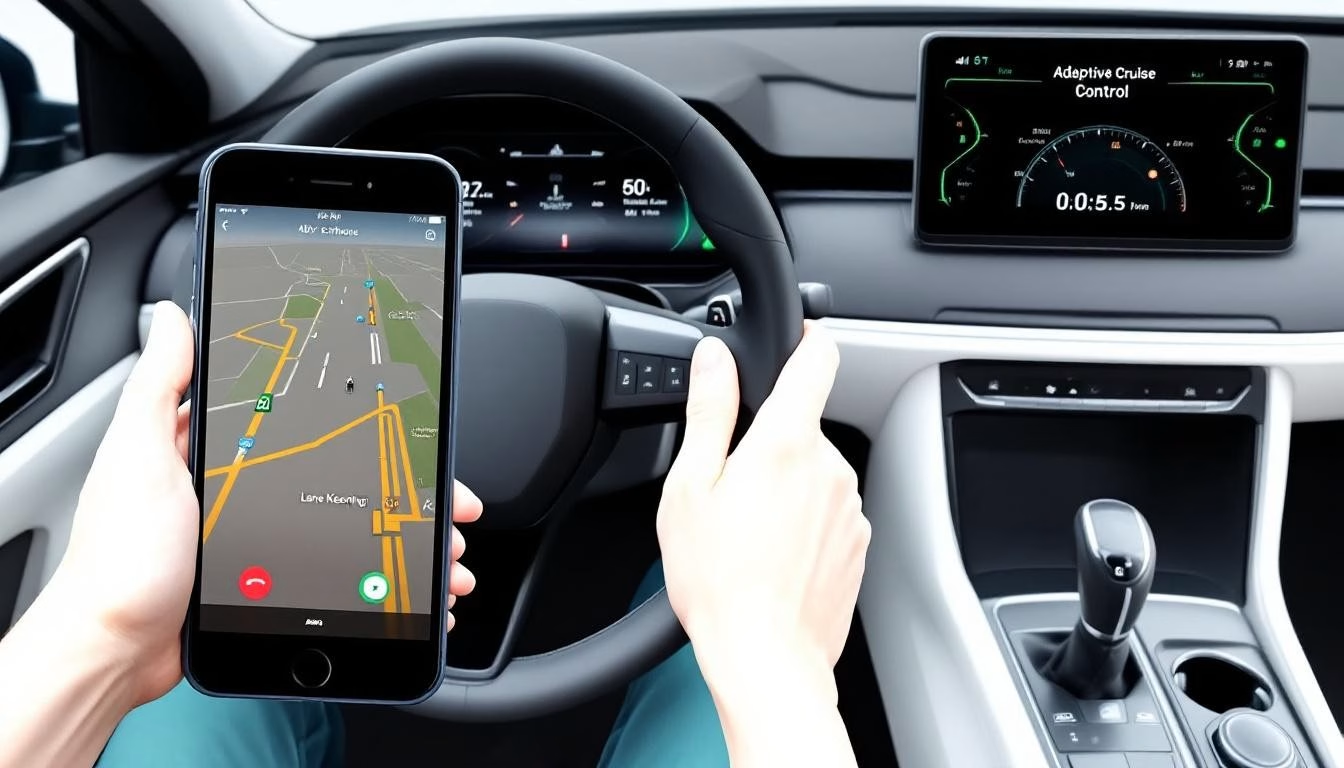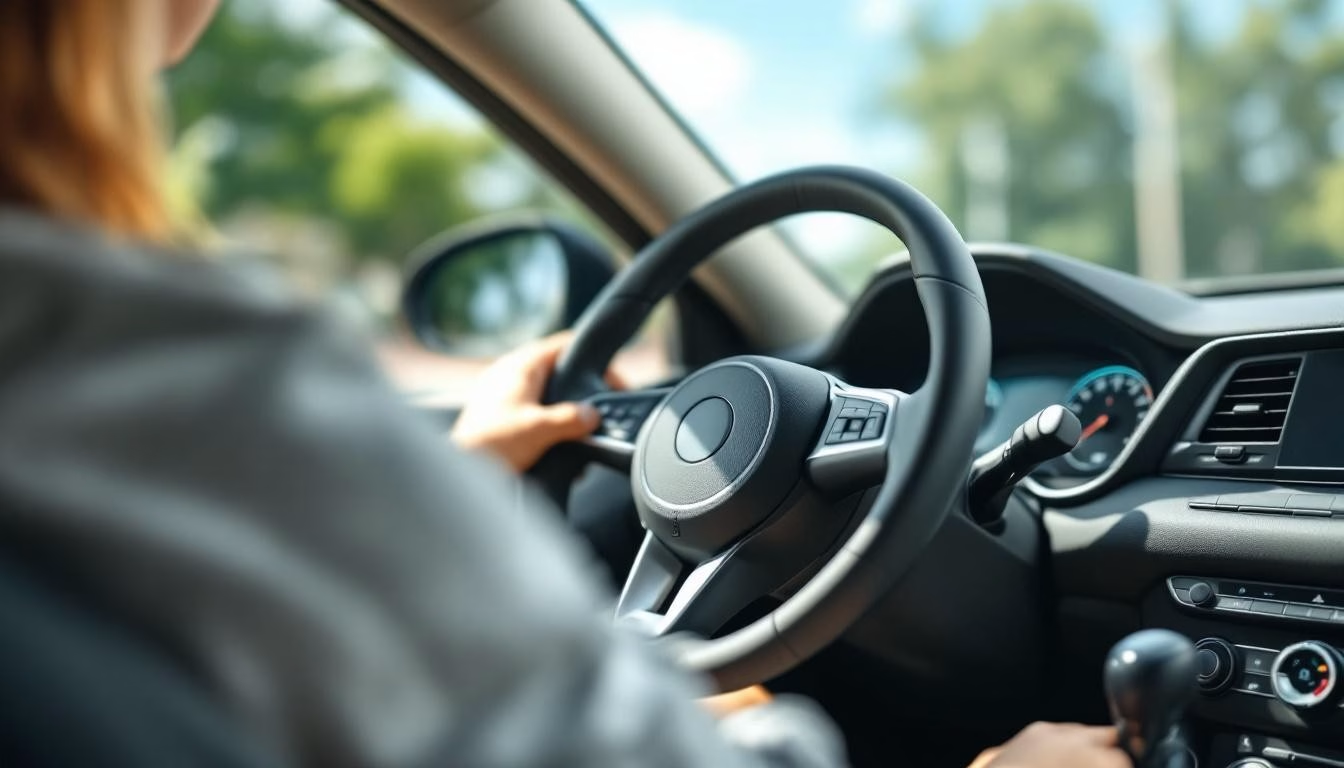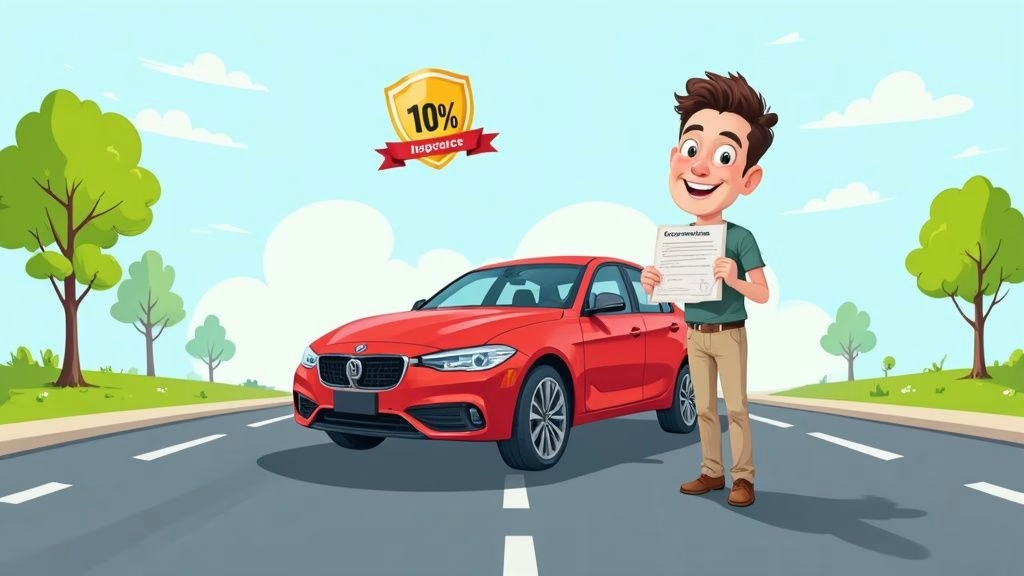Senior drivers face unique challenges on the road, from vision changes to slower reaction times. These factors contribute to higher accident rates among drivers aged 65 and older.
At floridanewdriver.com, we believe defensive driving for seniors isn’t just about safety-it’s about maintaining independence. The right techniques and technology can help older drivers stay confident behind the wheel while protecting themselves and others.
What Physical Changes Affect Senior Driving Safety
Vision Problems Create Serious Road Hazards
Vision changes pose the greatest threat to senior driving safety. The proportion of licensed drivers 65+ has risen from 14% in 2001 to 21% in 2021. Night vision deteriorates first, with many seniors losing their ability to see clearly in low light conditions.
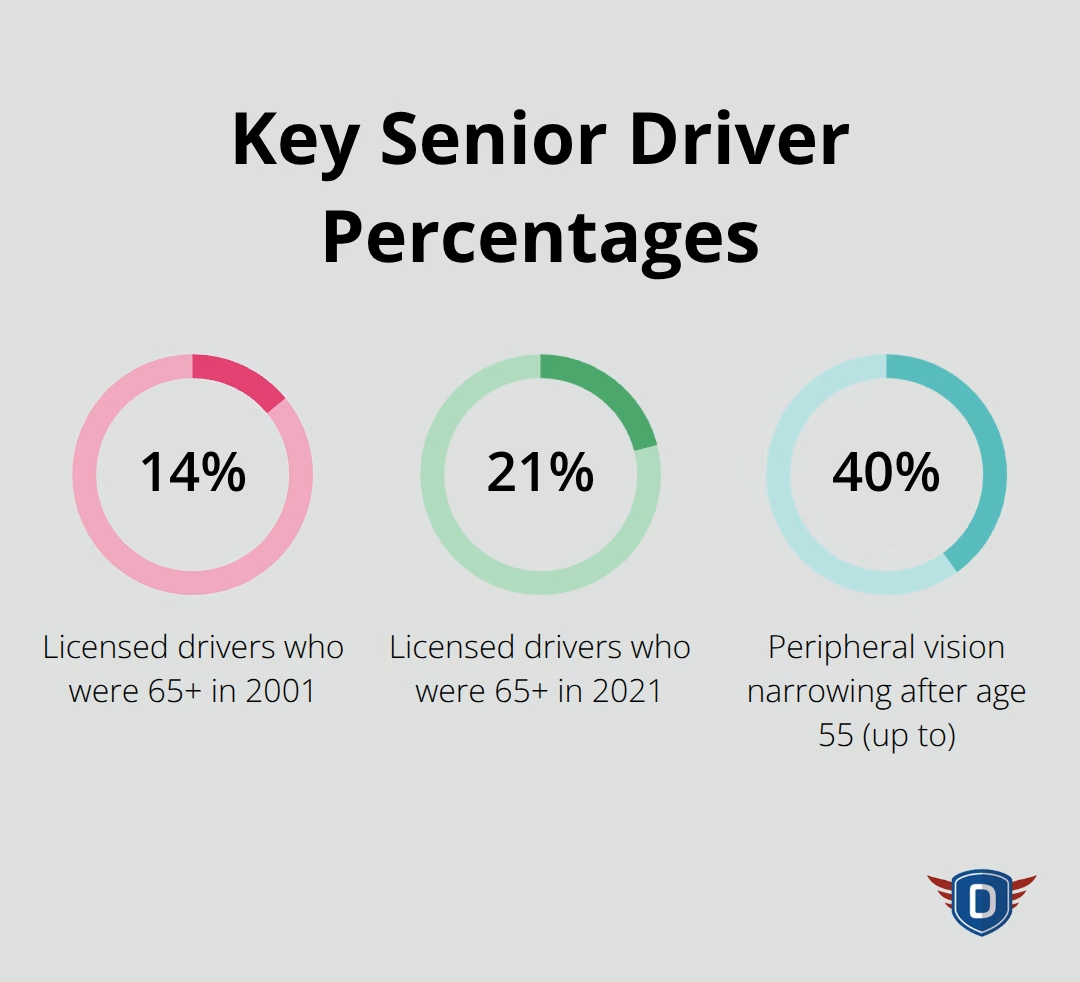
Cataracts restrict driving mobility and decrease safety on the road, creating glare problems that make oncoming headlights blind drivers. Peripheral vision narrows by up to 40% after age 55, which makes it harder to spot cars in adjacent lanes or pedestrians at crosswalks. Depth perception also declines and makes it difficult to judge distances when drivers merge or park.
Physical Limitations Slow Down Response Times
Reaction times increase by an average of 0.5 seconds for drivers over 70 compared to younger adults. This delay means drivers travel an extra 37 feet at highway speeds before they apply brakes. Arthritis affects 54% of seniors and makes it painful to turn the steering wheel quickly or check blind spots.
Muscle strength decreases by 30% between ages 50 and 70, which reduces the ability to control the vehicle during emergency maneuvers. Hearing loss impacts 48% of adults over 65 and prevents them from hearing emergency sirens, car horns, or approaching vehicles. Cognitive processing slows down and makes complex driving situations like busy intersections or highway merging more challenging.
Crash Statistics Reveal Alarming Patterns
Senior drivers aged 30 to 39 actually cause the highest number of fatal accidents annually, but seniors face higher fatality rates when crashes occur. Drivers over 85 have crash rates similar to teenage drivers (with 22% of both men and women still driving at this age according to recent data).
Wyoming and Arkansas report the highest rates of fatal senior accidents, while Washington and Massachusetts show the lowest rates. The average driving life expectancy drops significantly after age 70, with many seniors voluntarily stopping to drive in their mid-70s due to safety concerns.
These physical changes don’t have to end your driving independence. Smart defensive techniques can help seniors adapt to age-related challenges and stay safe on the road. Regular vision and health check-ups and driver refresher courses can help maintain driving skills as you age.
How Do Seniors Drive More Defensively
Speed Control and Following Distance Save Lives
Senior drivers must follow the three-second rule religiously, but age-related changes demand even more space. Drivers over 70 need at least four seconds of following distance because their reaction times increase by 0.5 seconds compared to younger adults. At 60 mph, this extra reaction time means traveling 44 additional feet before brakes engage. The National Highway Traffic Safety Administration reports that rear-end collisions account for 40% of senior driver accidents, which makes proper following distance the most important defensive technique.
Speed management becomes more critical as reflexes slow down. Seniors should drive 5 mph below the speed limit in heavy traffic or unfamiliar areas to gain the extra processing time they need. Weather conditions require even greater speed reductions – seniors should drive 10-15 mph slower than posted limits during rain or snow because their depth perception and contrast sensitivity decline with age.
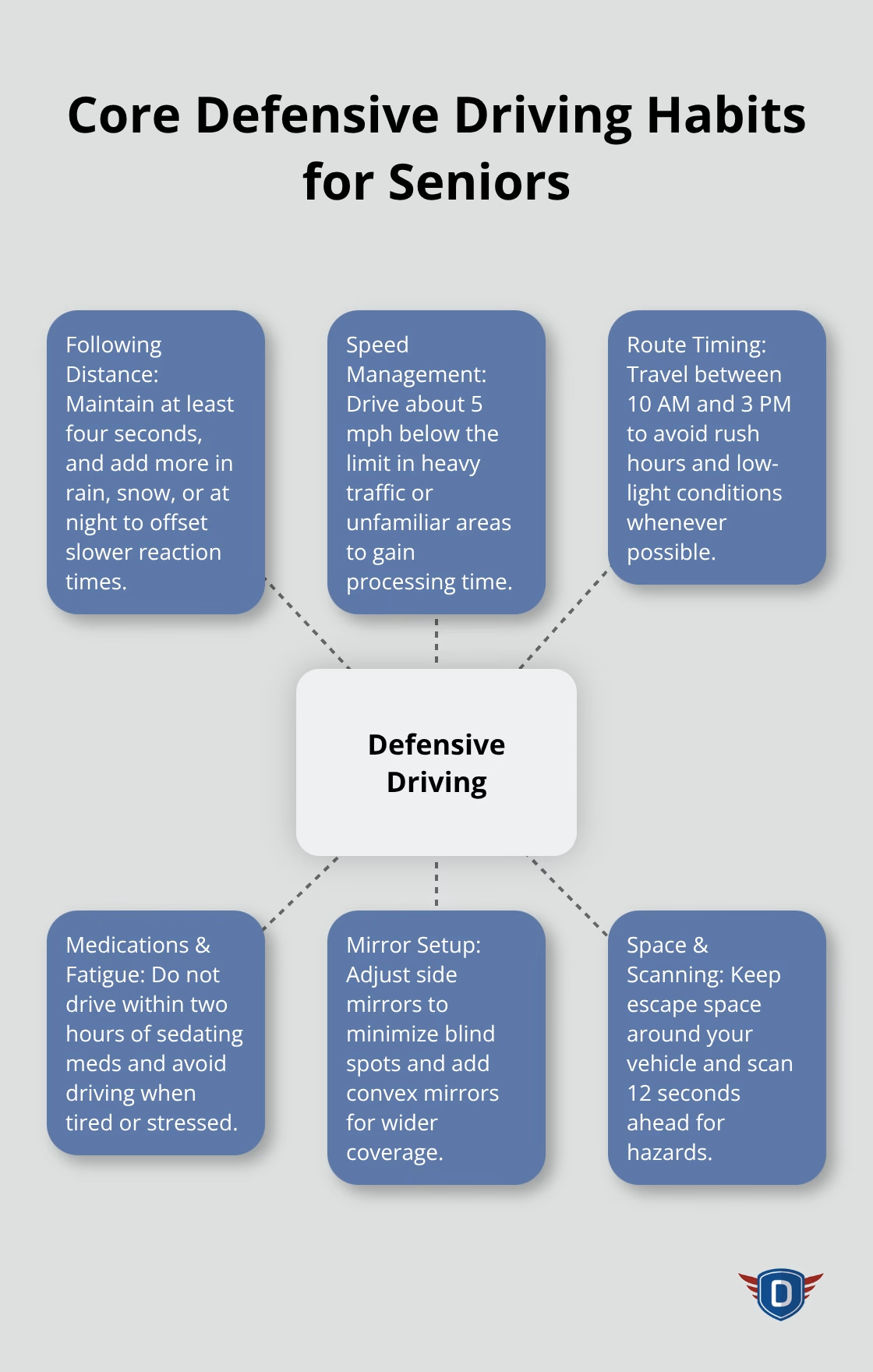
Mirror Positioning and Blind Spot Management
Standard mirror adjustment fails senior drivers who lose peripheral vision. The Society of Automotive Engineers recommends that drivers position side mirrors to show just a sliver of their vehicle’s edge, which eliminates most blind spots. Seniors should also install convex blind spot mirrors on their side mirrors – these $5 accessories from auto parts stores can prevent lane-change accidents that increase 30% for drivers over 75.
Physical limitations make traditional shoulder checks painful for 54% of seniors with arthritis. A right-side mirror specifically for parking and lane changes compensates for reduced neck mobility. Drivers should adjust the rearview mirror to frame the entire rear window and clean all mirrors weekly (seniors need 40% more light to see clearly than younger drivers).
Strategic Route Planning Reduces Risk
Pre-planned routes eliminate dangerous last-minute decisions that cause accidents. Seniors should use GPS devices or smartphone apps like Waze to identify the safest routes and avoid left turns across traffic when possible. Research shows that older drivers have experienced significant safety improvements, with fatality rates per capita decreasing 47% since 1975, though 5,502 people age 70 and older still died in motor vehicle crashes recently.
The timing of trips matters more for seniors than any other age group. Drivers should travel between 10 AM and 3 PM to avoid rush hour stress and take advantage of optimal lighting conditions. Never drive within two hours of taking medications that cause drowsiness, and avoid driving when you feel stressed or fatigued – these conditions double accident risk for drivers over 65.
Modern technology offers additional safety features that can help senior drivers navigate roads more confidently and reduce their accident risk even further. Taking a defensive driving class can also provide valuable skills while potentially lowering insurance costs.
What Technology Helps Seniors Drive Safer
Forward Collision Systems Prevent Most Senior Crashes
Advanced driver assistance systems help improve safety for older drivers, with studies showing drivers in their 70s are now less likely to be involved in fatal crashes than middle-aged drivers. Forward collision warning with automatic emergency braking prevents the rear-end collisions that cause 40% of senior accidents. These systems detect vehicles ahead and apply brakes faster than human reflexes allow.
Lane departure warning alerts drivers when they drift between lanes without signaling, which happens more frequently as peripheral vision declines. Blind spot monitoring compensates for vision changes that can affect quality of life and mobility. Toyota, Honda, and Subaru now include these features as standard equipment on most models, which makes them accessible without expensive upgrades.
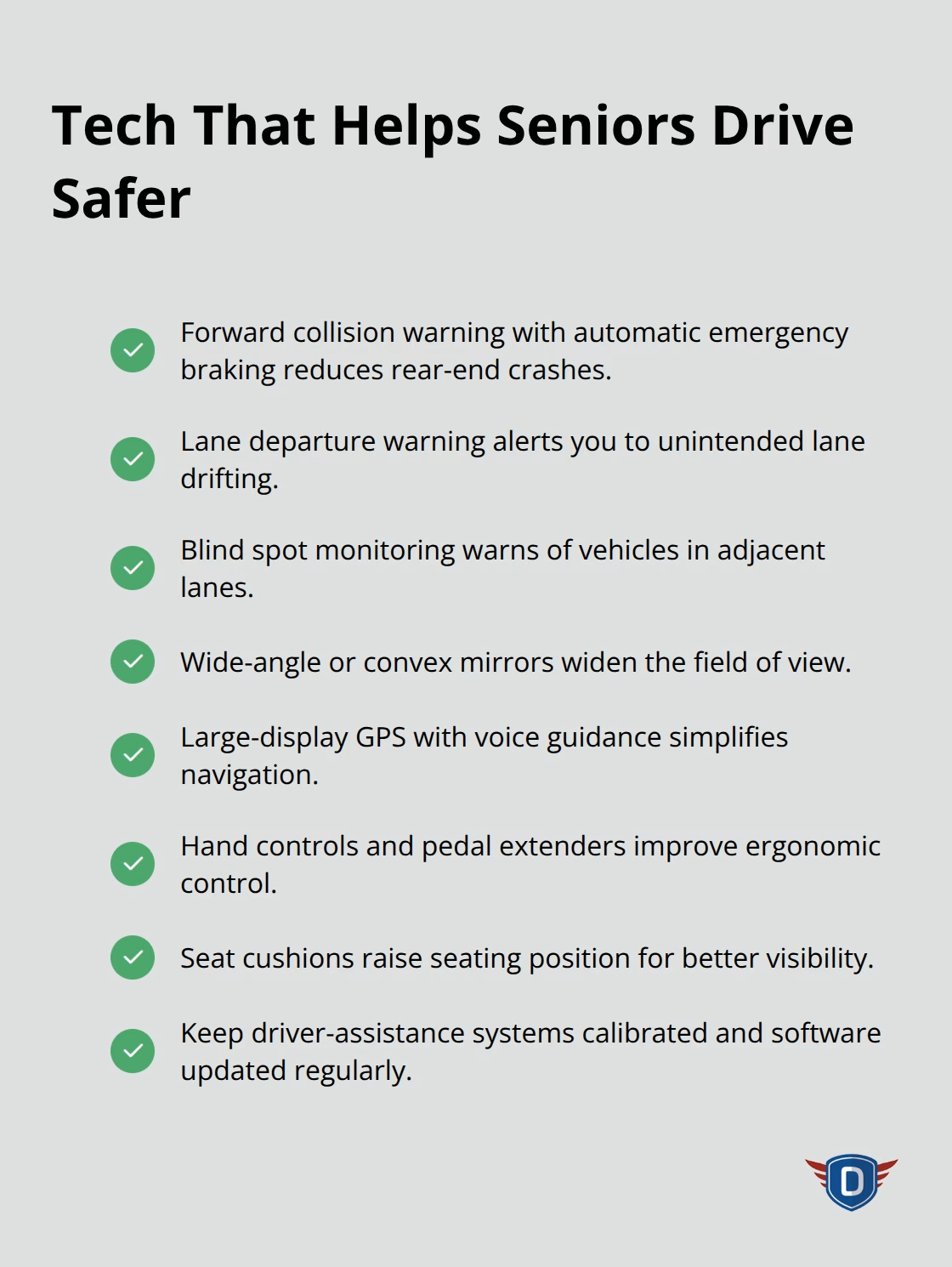
Simple Vehicle Modifications Make Driving Comfortable
Seat cushions raise drivers 2-4 inches higher for better road visibility and easier entry and exit. Pedal extenders help seniors with shorter legs reach controls safely without sitting too close to airbags (the recommended distance is 10 inches from the steering wheel). Spinner knobs attach to steering wheels and allow one-handed turning for drivers with arthritis or limited arm mobility.
Wide-angle mirrors expand the field of view by 30% compared to standard mirrors. Hand controls for brake and accelerator pedals eliminate the need for foot operation entirely. These modifications cost $50-$300 each and most auto parts stores install them within an hour.
Navigation Apps Reduce Senior Driving Stress
GPS devices with large displays and voice directions eliminate the need to read small maps while driving. Waze identifies construction zones, accidents, and heavy traffic in real-time, which allows seniors to choose safer alternate routes. Google Maps offers lane guidance for complex highway interchanges that confuse older drivers.
The AAA Mobile app locates nearby gas stations, restaurants, and rest stops during long trips. Senior-specific apps like GrandPad Navigator use simplified interfaces with bigger buttons and clearer instructions (these apps cost nothing to download). These tools work on smartphones or dedicated GPS devices that mount easily on dashboards and provide the extra navigation support that many seniors need.
Taking a driver safety course can also help seniors learn about new technologies while potentially earning insurance discounts. Combined with these technological aids, seniors can maintain their independence while becoming better drivers through improved awareness and safer driving habits.
Final Thoughts
Defensive driving for seniors requires adaptation of proven techniques to age-related changes. The four-second rule, speed reduction in challenging conditions, and strategic mirror positioning form the foundation of safe senior driving. Technology like forward collision warning and GPS navigation provides additional protection layers that compensate for vision and reaction time changes.
Regular evaluations become necessary when family members express safety concerns or after medical events that affect abilities. The AARP Smart Driver course helps refresh skills while potentially reducing insurance costs by up to 10% (over 20 million drivers have completed this program). Professional instruction offers personalized guidance for seniors who face specific challenges.
We at floridanewdriver.com provide comprehensive driver education programs with certified instructors who understand the unique needs of older drivers. Independence doesn’t require safety compromises when seniors combine defensive techniques with appropriate technology and ongoing education. Seniors who adapt their habits as physical abilities change can continue to drive well into their 80s.

![Defensive Driving for Seniors [2025 Guide]](https://floridanewdriver.com/wp-content/uploads/emplibot/defensive-driving-for-seniors-hero-1761620875.avif)


